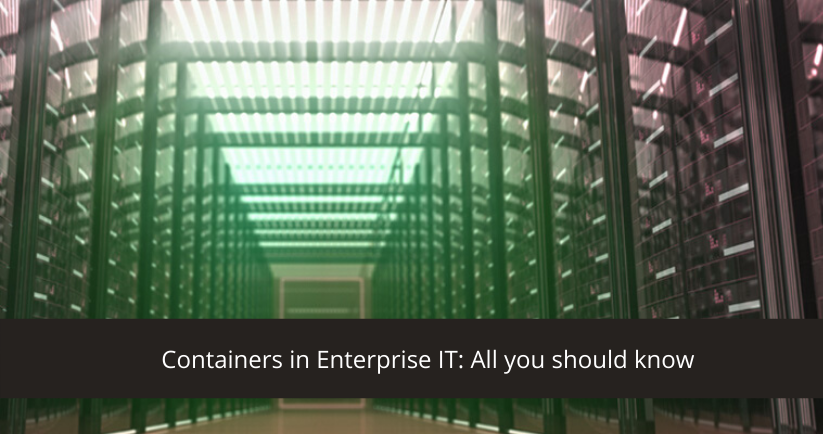Enterprise IT helps companies manage their multiple business functions in one go.
It is quite hard to avoid the buzz around containers these days. The inception of the container fad has stirred massive excitement in the IT landscape. In fact, tech pundits claim that container technology can transform the way IT operations are executed similar to virtualization technology. Let’s find out in detail:
What exactly are containers?
Container technology claims to address the problem of how to run a software consistently when moved from one computing ecosystem to the other. Simply put, it could be from a developer’s workstation to a test environment or from a staging environment to production stage or perhaps from a physical data center to a virtual data hub in public or private cloud.
This is why container technology is gaining increasing popularity among budding startups and business tech leaders as well as cloud providers. As such, containers are being regarded by most enterprises as a means to improve agility, portability and deliver computing applications faster.
Containers are quite similar to the virtual machines except for the user space. For instance, a container that uses OS level virtualization has stringent limitations tailor-made to run specific applications only. What makes container technology important for enterprise IT is the fact that the focus on one particular application differentiates it from virtual machines.
Container Technology: What’s in it for Enterprises?
- Containers are proving to work quite well as architecture. For instance, these are well designed using a centralized hub and are scalable. In fact, all the major public cloud platforms support containers including Microsoft, IBM, Google and AWS.
- Containers enable users to lay down application environment. And a streamlined application environment means that you don’t have to worry about incompatible utilities and applications or OS patches. This is one of the key reasons containers are deemed to be relevant and useful in enterprise data center management.
- Security is another benefit that containers would offer for enterprise IT. Often, security violations occur from escalation of privileges to application components or utilities affecting the entire system. Since containerized applications are free from unused utilities, there’s minimal exposure to security breach or infection.
- Further, as containers enable fully scalable application platforms, enterprises can choose to have containerized applications when it comes to specific functions keeping monolithic systems at bay, which are difficult to scale and a pain to the IT when it comes to management them.
- Another key advantage of containers is that virtual data machines often eat up several minutes of time to boot up their OS when it comes to run the applications they host, whereas containerized applications can be kicked off instantly. Meaning, containers can be instantiated on the run when needed and can disappear when they are not required thus, freeing up all the resources on their host.
- Containers pave way for excellent modularity. Rather than running a complex application within a single container, the application can be divided into modules such as front end, database, etc. This is what is called a microservices approach. Such applications are easier to handle and manage, as changes can be made to the modules without the need of rebuilding the entire application saving time, efforts and resources.
Takeaway
Containers aren’t just a trend or fad, but a crucial or rather a revolutionary movement in the enterprise IT ecosystem with multiple benefits to offer. Since containers have emerged at the same time when an increasing number of enterprises are driving applications to cloud, it could be a perfect technology kicking in at the right time. To unleash the true potential, containers ought to be standardized, aptly packed for easy consumption, orchestrated and configured.
To read more such exciting enterprise IT and tech trends, visit our blog here or shoot us a mail at sales@sagesoftware.co.in
Disclaimer: All the information, views and opinions expressed in this blog are those of the authors and their respective web sources and in no way reflect the principles, views or objectives of Sage Software Solutions (P) Ltd.
Sources: CIO, ZDNet, InfoWorld and Network Computing




